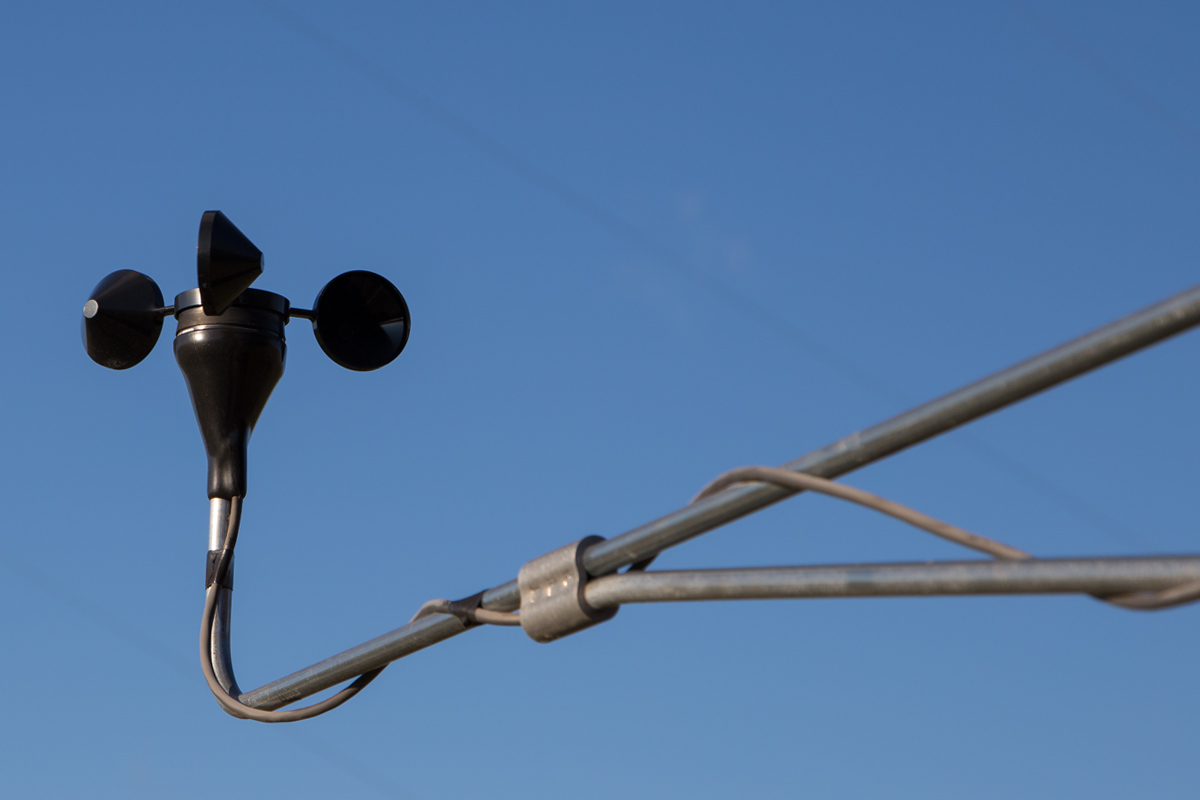The Duty of an Anemometer in Improving Safety for Outdoor Activities
The Duty of an Anemometer in Improving Safety for Outdoor Activities
Blog Article
Anemometers Unveiled: Comprehending Their Relevance in Ecological Surveillance and Safety And Security Procedures
The duty of anemometers in environmental tracking and safety procedures is commonly underestimated, yet their relevance is indisputable. From weather forecasting to aeronautics safety, anemometers play an important function in giving accurate information that informs decision-making processes and enhances overall safety.
Background of Anemometers
The advancement of anemometers can be traced back to the ancient people where primary wind gauging gadgets were initial made use of. One of the earliest known anemometers was the hemispherical cup anemometer developed by Leon Battista Alberti in the 15th century.
In the 18th century, the popular researcher John Thomas Romney Robinson presented the Robinson anemometer, which featured 4 hemispherical cups mounted on straight arms that expanded from a central axis. This layout became a requirement in atmospheric measurements as a result of its precision and reliability. Throughout the years, advancements in innovation caused the development of even more modern anemometers, consisting of ultrasonic anemometers and laser Doppler anemometers, providing raised precision and performance in gauging wind rate and instructions. The history of anemometers showcases an amazing journey of development and development in the area of meteorology.
Kinds of Anemometers
Throughout the area of meteorology, different kinds of anemometers have been developed to properly measure wind speed and direction. Sonic anemometers utilize ultrasonic signals to determine wind speed and instructions accurately. Hot-wire anemometers operate based on the concept that the cooling result of wind on a heated cable is symmetrical to the wind speed.
Applications in Weather Forecasting
Having discussed the different types of anemometers utilized in meteorology for measuring wind speed and instructions, it is necessary to explore their practical applications in the area. Anemometers play an essential role in weather forecasting by giving exact and real-time information on wind problems (anemometer). Meteorologists make use of anemometers to check wind speed and instructions to forecast weather condition patterns, issue warnings for severe weather events like hurricanes, storms, and typhoons, and examine weather for aviation security
In meteorology, anemometers assist in comprehending local and regional wind patterns, which are crucial for anticipating climate changes and establishing climatic fads. These gadgets are also used in research study to examine microclimates, metropolitan warm islands, and air pollution diffusion. Additionally, anemometers are used in agriculture to optimize plant administration practices, such as irrigation and pesticide application, based upon other wind problems.
Importance in Air Travel Safety And Security
An integral facet of making sure aeronautics safety and security lies in the thorough monitoring of wind conditions making use of anemometers. Anemometers play an important function in air travel by supplying real-time data on wind rate and instructions, helping pilots in making informed choices during flight, landing, and liftoff. Strong and unpredictable winds can significantly impact aircraft procedures, making it vital for aeronautics authorities to depend on exact wind measurements to ensure the security of travelers and team.

In the vibrant atmosphere of aeronautics, where also minor changes in wind rate and direction can have extensive effects, anemometers stand as vital devices for advertising secure and safe air travel.
Function in Environmental Study
How do anemometers add to improvements in environmental research study? Anemometers play an important function in environmental research study by giving crucial data on wind rate and instructions. This details is vital for comprehending different climatic procedures, such as air contamination dispersion, weather condition patterns, and climate modification. By precisely measuring wind attributes, anemometers help researchers assess the movement of pollutants in the air, assess the effect of commercial emissions, and anticipate the spread of pollutants in the setting.


Final Thought
Finally, anemometers have played a critical duty in environmental monitoring and precaution. With a rich background and numerous types readily available, these tools have been commonly made use of in meteorology, aviation safety, and ecological research. Comprehending the importance of anemometers is important for accurately measuring wind speed and direction, which is vital for forecasting weather patterns, guaranteeing secure air travel procedures, and carrying out ecological studies - anemometer. Their contributions to these fields can not be taken too lightly.
One of the earliest recognized anemometers was the hemispherical mug anemometer created by Leon Battista Alberti in the 15th century. Over the years, advancements in modern technology led to the development of more contemporary anemometers, including ultrasonic anemometers and laser Doppler anemometers, using enhanced accuracy and effectiveness in gauging wind speed and instructions. Hot-wire anemometers run based on the principle that the cooling effect of wind on a warmed wire is symmetrical to the wind speed. Meteorologists use anemometers to check wind rate and instructions to forecast weather condition patterns, concern warnings for extreme weather condition events like hurricanes, storms, and storms, and evaluate atmospheric problems for air travel safety.
Recognizing the relevance of anemometers is necessary for accurately determining wind speed and direction, which is essential for predicting weather condition patterns, guaranteeing risk-free air travel procedures, and performing ecological studies. (anemometer)
Report this page